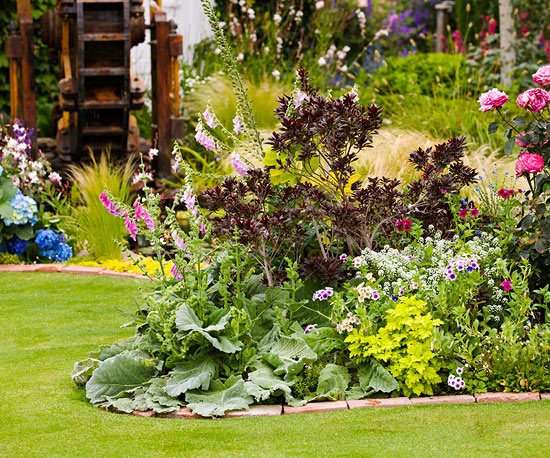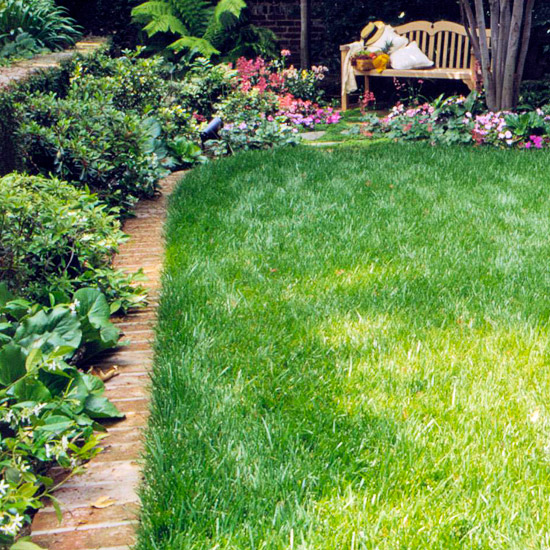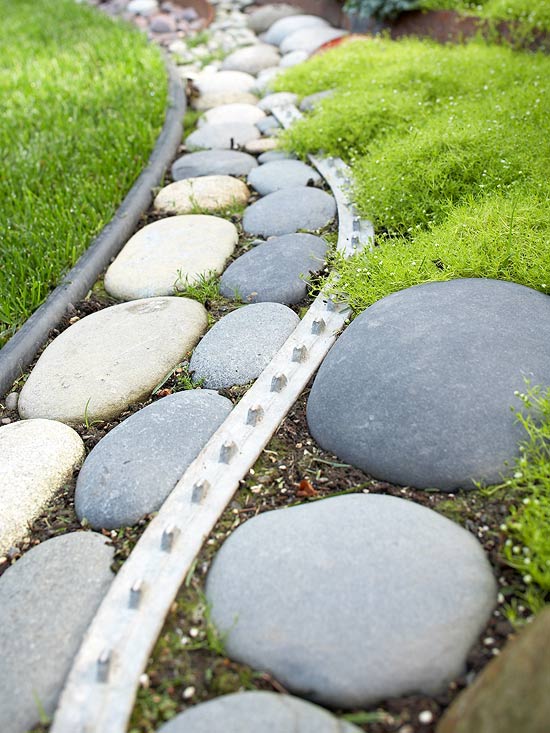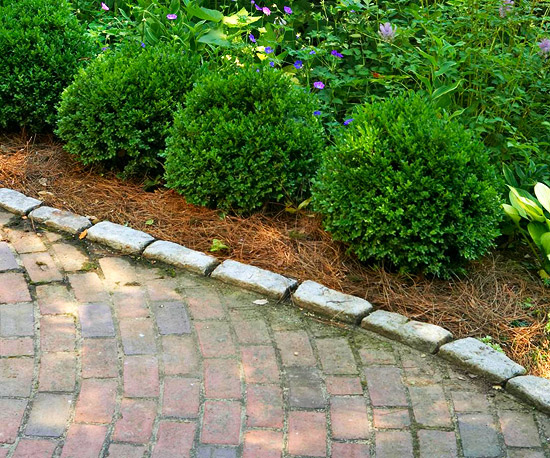






Edging plays important roles in the garden. Most well-designed gardens consist of a series of shapes and forms, each representing an area set aside for a different purpose, such as a vine-covered sitting area or a flower garden. Using landscape edging accentuates each garden area and defines the shape and form of the overall design.
continue reading belowEdging creates clean, crisp lines between beds and other areas. It is most visible between a lawn and the adjoining garden, but landscape edging can define a flower border, a shrub bed, or the transition from a patio to the surrounding garden. It emphasizes the lines of beds, and it leads the eye to the next garden focal point.
Find out how to use rocks and stones as edging and more in your landscape.

From a practical standpoint, landscape edging keeps turfgrass from spreading into surrounding garden areas. At the same time, it prevents soil or mulch from the garden from spilling onto the lawn. Landscape edging also corrals pathways made of loose material, such as gravel or mulch; it maintains clearly defined walkways while keeping the path materials in place.
Taller edging, such as low hedges or low fencing, can direct garden traffic and keep people on defined paths. Using landscape edging also serves to keep people out of areas where you don't want them to go, such as planting beds.
If landscape edging is flat and wide enough, it can handle the wheels of a lawn mower. A practical mowing strip created by landscape edging eliminates the need for manicuring the edges with a string trimmer, and it prevents you from mowing over tender plants in beds at the edge of a lawn.
Edging should be set firmly in place. Otherwise mowers, garden carts, children, or your own shoes can unsettle it, and you will be repeatedly resetting materials.
A wide range of materials is suitable for landscape edging. The material you choose should be based on function, style, and cost.
Lawn & Garden Divider: As a divider between the lawn and garden bed, edging can be as simple as a trenched edge or a V-shape ditch.
Mowing Strip: Use a flat, wide material, such as brick or flat stones, to create a firm base suitable for the wheels of a lawn mower.
Mulch Capture: To keep a heavily mulched bed in place, use a material that extends at least 2 inches above ground (and 4 inches below).
Beauty Edging: If the edging is purely aesthetic, your imagination can run free.
Get more ideas for edging garden beds.

When selecting a style of edging for your garden, consider the other materials in the garden. Edging can be a strong unifying factor, but if it introduces a new material to the garden scheme, the wrong choice can be a distraction.
Brick, stone, or pavers can unify the edging with a patio or path. Fencing can help connect to a pergola or trellis. Low shrubs can blend into the planting beds for a defined but natural look. Unexpected materials, such as tile or glass, can be used with standard edging materials to match accents from other garden areas.
Explore ideas for garden path materials.
Costs depend on the material type and quantity. Repurposed stones may be free; tiles or brick may be very expensive.
If an expensive edging material is your dream, think about using it sparingly. Consider using the expensive landscape edging material only in areas that will be seen up close and often, such as the front yard, or use it as an accent near garden focal points. More affordable materials can be both pretty and practical elsewhere in the garden.
In addition, include the cost of installation in your landscape edging plans. The installation cost of different materials varies, as does the ease of doing the installation yourself. Some materials require professional installation or special tools to get the desired look. Others lend themselves to an easy do-it-yourself project.
The color of the edging has a big impact on the overall perception of your garden. Use landscape edging in a color that either complements or clearly contrasts with the surrounding foliage and flowers. In casual settings, link the edging to the garden bed by using plants of a similar color or tone. For more formal beds and edging, use uniform materials, such as steel, wood, brick, or prefabricated masonry.

Learn to install plastic edging.
Learn to shop for landscaping stone.
Copyright © www.100flowers.win Botanic Garden All Rights Reserved